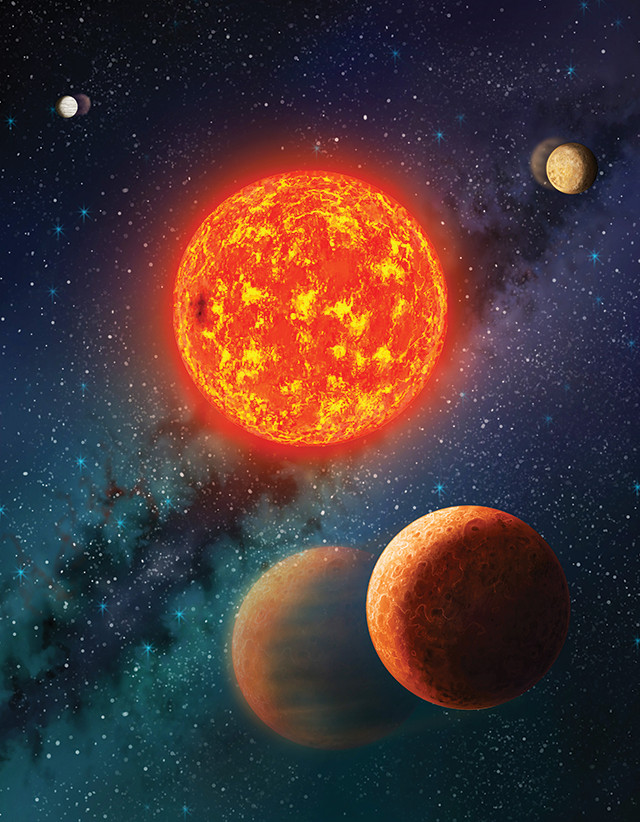
by Timothy Oleson Wednesday, March 16, 2016

This illustration depicts the Kepler-138 system, with Mars-like Kepler-138b in the foreground. The masses and densities of the system's three small planets were determined by studying how each affected the orbits of the other two. Credit: Danielle Futselaar, SETI.
By the late 19th century, astronomers had calculated correctly that Mars — about half the diameter of Earth — holds roughly one-tenth the mass of Earth, whereas its density is about 71 percent that of our planet. These fundamental planetary traits have also long been known for Mercury and Venus. But measuring the masses and densities of the many roughly Earth-sized exoplanets discovered lately — which, to space telescopes, appear as mere specks as they pass in front of, or transit, their home stars — has proved challenging.
In a recent study in Nature, however, scientists have reported these traits for three small exoplanets orbiting a star about 200 light-years away, including, for the first time, one that’s smaller than Earth. Daniel Jontof-Hutter of Penn State University and colleagues studied observations of the Kepler-138 system collected by NASA’s Kepler mission. The presence of the three exoplanets — simply named b, c and d — had previously been confirmed, and the planets’ sizes had been determined based on the amount of light they blocked as they transited Kepler-138. But their masses were unknown.
By analyzing how the timing of each of the planets’ transits was affected by the gravitational pull (the strength of which is related to mass) of the other two planets, the researchers calculated masses for each. With the sizes already known, they could then determine the planets’ densities, information that allows astronomers to piece together what planets are made of. With a mass about 7 percent and a density about 50 percent of Earth’s, Kepler-138b is similar to Mars, and is the smallest exoplanet to be characterized in such detail. Meanwhile, the two larger exoplanets are closer to Earth in size, but have substantially different densities from each other. The finds broaden our understanding of the relationships between planetary size and composition, and how planetary systems can evolve.
© 2008-2021. All rights reserved. Any copying, redistribution or retransmission of any of the contents of this service without the expressed written permission of the American Geosciences Institute is expressly prohibited. Click here for all copyright requests.